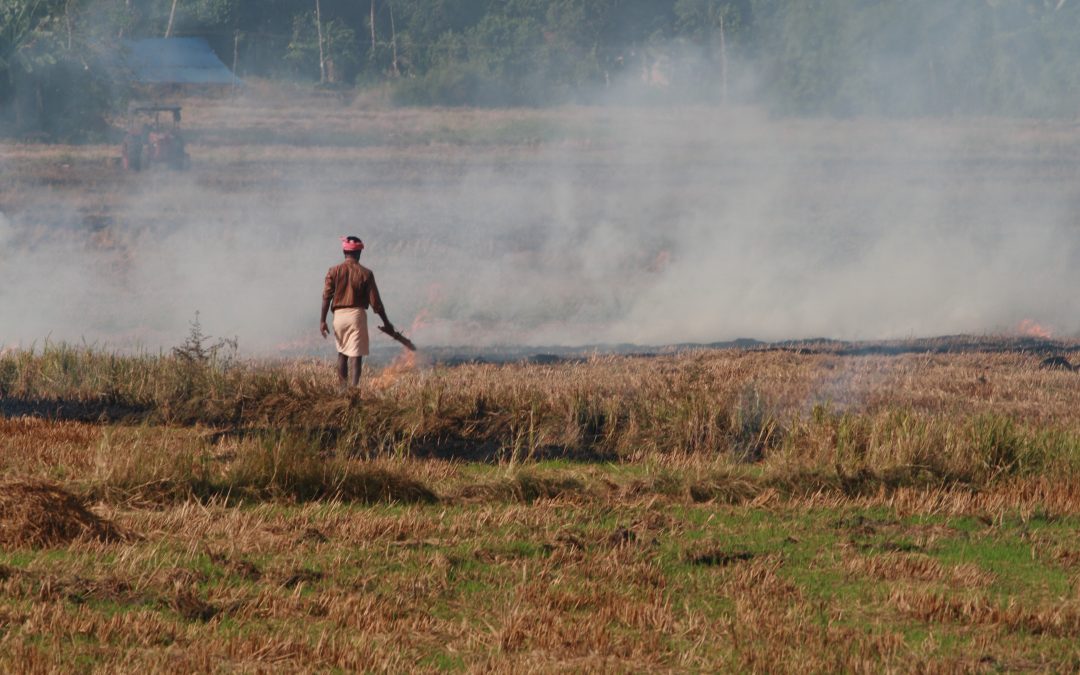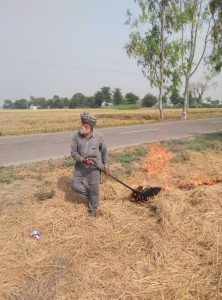Dr Pritish Behuria, Hallsworth Research Fellow, Global Development Institute
Over the last few years, there has been increased public attention on the dangerously high levels of pollution in New Delhi and in other parts of India. In 2014, a World Health Organization report found that New Delhi had the dirtiest atmosphere of 1,600 cities across the world. In November 2016, one CNN report claimed that New Delhi was the most polluted city in the world at that time. India’s Central Pollution Control Board found that air in other Indian cities (including Bhiwadi in Rajasthan, Kolkata and Agra) was even worse than the capital.
Much has been written about the sources of India’s pollution. In 1997, the Ministry of Environment published a white paper on pollution in Delhi (though very little action was taken). Two government reports highlighted key pollutants including the burning of coal, petrol, diesel, gas, biomass and waste and dust (road and windblown) – though other government studies arrived at different conclusions. Dust generated through infrastructure projects in the capital and annual increases in the number of cars have also contributed to increase in carbon emissions, particularly through diesel cars and trucks. One report suggested the number of vehicles registered in Delhi increased from 2.3 million in 1975 to 4.2 million in 2004 and is estimated to be around 7.2 million as of 2016.
October and November tend to see the highest spikes in pollution across North India. Some of the increases in pollution levels are due to weather conditions including low wind speed, lack of vertical wind and lower temperature. Since winds blow pollutants and particulate matter away, their absence results in pollutants becoming stagnant in the air. Diwali – India’s festival of lights – usually falls during these months. The celebration of Diwali includes the burning of firecrackers, which is also thought to contribute to increasing pollution levels. Another contributory factor to the increase in pollution levels is the burning of stubble, which refers to the setting of fire to the straw stubble that remains after rice and wheat and other grains are harvested. Farmers in North India burn stubble in May after harvesting wheat and then again in October/November after harvesting paddy. In Punjab alone, nearly 20 million tonnes of paddy straw is burned every year. Stubble burning is thought to result in the emission of harmful gases including carbon monoxide, N2O, NO2, SO2, CH4, along with particulate matter and hydrocarbons. Though the practice has a detrimental effect on the soil and the environment more generally, it is the cheapest method to get farms ready for timely wheat sowing.
The Supreme Court moved to ban the sale of firecrackers in Delhi this year though residents in the capital found ways to defy the ban. The Punjab and Haryana High Courts initially banned the burning of stubble on 16 April, 2012. However, the implementation of the ban has proven extremely difficult over the past five years. In 2015, the National Green Tribunal (NGT) issued a direction to four state governments – Uttar Pradesh, Punjab, Haryana and Rajasthan – that any farmers engaging in stubble burning would have to pay fines ranging from Rs. 2,500 to Rs. 15,000. Though some support and incentives were offered to farmers to find alternatives to stubble burning, farmers complained that they did not receive anything. In 2017, the Delhi High Court warned the state governments that they must implement the ban. The NGT even threatened to enforce pay cuts for government officers in those states if the ban was not implemented. Many farmers resisted, signing petitions through their village panchayats (village governments) to openly defy the government and declared that they would continue to burn stubble. Those farmers were ready to collectively bear the consequences of government penalities and actions against them. Meanwhile, state governments had begun to identify farms, where stubble is being burned, and also imposed penalties.
The issue, itself, brings some important issues to the surface. Should farmers have their profit margins reduced for the sake of public health in the region? Farmers complained that rural areas were being made to suffer for the sake of those living in urban areas. Though there is some truth to this and farmer livelihoods were threatened, the air in rural areas is also detrimentally affected by stubble burning and one report claimed that more than 80% of Punjab’s population suffered from pollution-related health illnesses.
Most importantly, it is simply unfair for the government to expect farmers to adopt new and more environmentally-friendly methods without the provision of subsidies or other incentives to them. Though subsidies on happy seeders and straw reapers were offered, farmers claim that ‘announcements remain only on paper’ and even the subsidies offered were not enough to protect their profit margins.
Stubble burning has become a contentious point across Punjab and Haryana. Farmers represent a significant political constituency for political parties in the region so different parties have used this issue to garner support with farmers. The Bhartiya Kisan Union (Indian Farmers’ Union) (BKU) has sought to mobilise farmers in demonstrations across both states, demanding subsidies and calling on the state governments to withdraw penalties for stubble burning. In Punjab, the BKU has demanded Rs. 200 per quintal or the provision of financial assistance to secure machinery for the disposal of straw (as per the NGT order). Opposition parties, the Aam Aadmi Party and the Shiromani Akali Dal, both supported farmer protests against the Punjab government. After initially stating that the Congress-led government in Punjab would adhere to the NGT order, Chief Minister Captain Amarinder Singh has said he would not take any action against farmers. Instead, he blamed the Bharatiya Janta Party (BJP)-ruled central government for not providing incentives and infrastructural assistance worth Rs. 2000 crore per year for the next three years to assist the farmers in finding alternatives to burning stubble. Though political wrangling may be an impediment to a solution in Punjab because Singh’s Congress is in opposition to Narendra Modi’s BJP, this is not the case in Haryana where the BJP is in control of the state government. Though Haryana Chief Minister Manohar Lal Khattar has not criticized the central government, Haryana Agriculture Minister recently requested Rs. 1600 crore to control stubble burning.
Political realities have blocked any attempt at coercively pushing farmers to adopt new production techniques. The solutions that have been offered are expensive and will not tackle the problem in its entirety. Another deterrent to adoption of these new technologies is time since wheat must be sown within 15 days of the paddy being harvested. Alternate methods will escalate the cost for farmers to the extent of wiping out the profit margin from sale of wheat. Therefore, effective and affordable solutions are required quickly.
The effect is that stubble burning continues to contribute to pollution increases across Northern India. Though there may be a financial solution to the problem of stubble burning, the central government must prioritise the delivery of funds to farmers if it is serious about tackling the issue of stubble burning. Clearly, the continuance of such practices must be stopped not only because of their environmental impact but also because they present a danger to farmers (one farmer recently died in Haryana as a result of stubble burning). However, it cannot be tackled coercively at the cost of the livelihoods of those working in the agriculture sector, who after all make up 50% of India’s working population.



